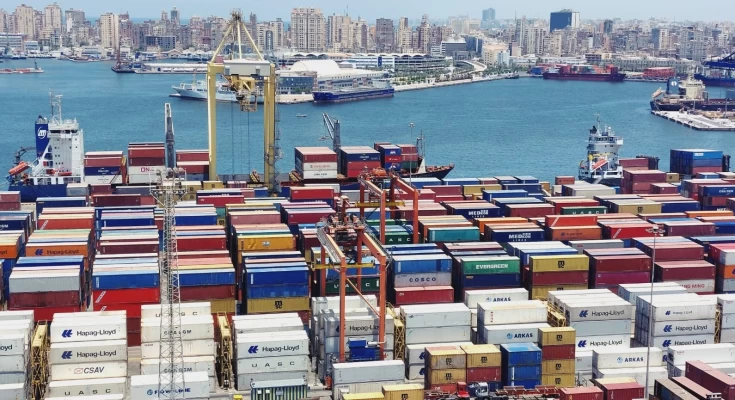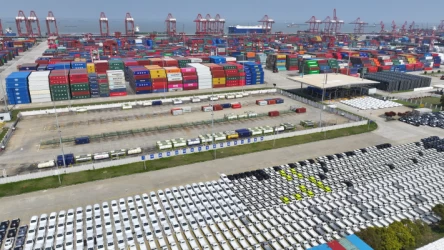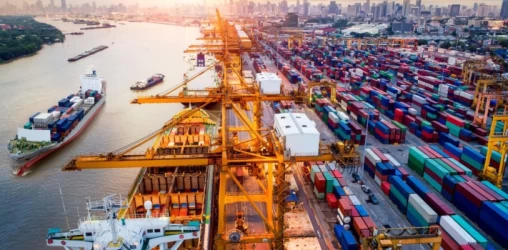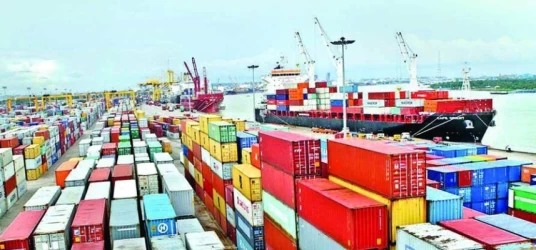Sea transportation in the port of Alexandria
The Port of Alexandria, located on the Mediterranean coast of Egypt, is one of the most significant and strategic seaports in the region. It plays a vital role in the Egyptian economy, serving as the primary hub for the country’s international trade. With its rich history and strategic location, Alexandria port has become a gateway for commerce between Europe, the Middle East, and Africa. This article provides a comprehensive guide to maritime transport in the Port of Alexandria, including its infrastructure, economic significance, key facilities, and its role in global shipping networks.
Historical Background
The Port of Alexandria has a long and illustrious history, dating back to the time of Alexander the Great, after whom the city is named. Historically, it was one of the most important trade centers in the ancient world. In modern times, it continues to serve as Egypt’s main port, handling a significant portion of the country's maritime cargo. Its historical significance as a hub of trade has shaped the development of Egypt’s maritime industry over centuries.
Infrastructure and Facilities
The Port of Alexandria is equipped with modern infrastructure, making it a vital hub for maritime transport. It covers an area of around 16 square kilometers and is divided into two primary parts: the Western Harbor and the Eastern Harbor.
- Western Harbor: This is the main commercial port, handling the bulk of cargo operations. It is divided into several terminals that handle different types of goods, including containers, bulk cargo, and general cargo. The Western Harbor is also home to specialized terminals, such as oil and chemical terminals, which handle the export and import of petroleum products and chemicals.
- Eastern Harbor: Although primarily used for naval and fishing vessels, the Eastern Harbor is also an important part of the port's overall operations. It has been a focus of recent development, aimed at expanding its role in cargo operations.
In recent years, the Egyptian government has invested heavily in upgrading the port's facilities. These upgrades include the construction of new container terminals, deepening of berths, and the expansion of storage facilities to accommodate larger volumes of cargo.
Economic Significance
The Port of Alexandria is a critical driver of Egypt's economy, contributing significantly to the country's GDP through its role in international trade. It handles approximately 60-70% of Egypt’s maritime trade, making it the busiest port in the country. Alexandria’s strategic location on the Mediterranean Sea makes it a natural gateway for goods flowing between Europe, Asia, and Africa. The port also supports the country's export sector, particularly in industries like textiles, chemicals, and agricultural products.
Moreover, the port generates significant employment opportunities for the local population. The growth of the logistics and maritime industries around the port has led to the development of support services such as warehousing, customs brokerage, and shipping agencies, creating a wide range of jobs in the region.
Key Shipping Routes and Trade Partners
The Port of Alexandria is connected to numerous global shipping routes. It serves as a key transit point for goods moving between the Mediterranean region and the Indian Ocean via the Suez Canal, which is located around 200 kilometers to the east. The port's proximity to the Suez Canal further enhances its importance in global trade, particularly for ships traveling between Europe and Asia.
Egypt’s primary trading partners through the Port of Alexandria include European Union countries, the United States, China, and neighboring Middle Eastern nations. The port handles a wide variety of goods, including agricultural products, textiles, machinery, chemicals, and oil.
Recent Developments and Future Prospects
In line with Egypt’s Vision 2030, the government has initiated several projects aimed at modernizing the Port of Alexandria and enhancing its capacity to handle larger vessels. These developments include:
- Expansion of Container Terminals: New terminals are being built to accommodate the growing demand for container shipping. The expansion will increase the port's handling capacity, allowing it to process more cargo efficiently.
- Automation and Digitalization: The port is adopting modern technologies to improve efficiency and reduce waiting times. Automated systems for cargo handling and customs clearance are being implemented to streamline operations.
- Environmental Initiatives: There is a growing emphasis on making the port more environmentally sustainable. Initiatives include reducing emissions from ships, improving waste management, and investing in green technologies.
Looking ahead, the Port of Alexandria is well-positioned to remain a key player in the global maritime industry. Its strategic location, combined with ongoing modernization efforts, ensures that it will continue to attract international shipping companies and play a vital role in facilitating global trade.
Challenges
Despite its many strengths, the Port of Alexandria faces several challenges. One of the main issues is congestion, particularly during peak shipping seasons. As the port handles a large volume of cargo, it can experience delays that affect the efficiency of maritime transport.
Another challenge is the need for further investment in infrastructure. While the government has taken steps to modernize the port, additional investments will be necessary to keep pace with the growing demand for maritime services. This includes upgrading roads and rail links to ensure that goods can be transported efficiently from the port to other parts of the country.
Conclusion
The Port of Alexandria is a cornerstone of Egypt’s maritime industry and plays a critical role in facilitating international trade. Its modern infrastructure, strategic location, and ongoing development make it a vital hub for global shipping networks. As the Egyptian government continues to invest in expanding and upgrading the port, Alexandria is poised to remain a key player in the maritime transport sector for years to come.
If you have any specific questions or need further assistance, feel free to ask!











